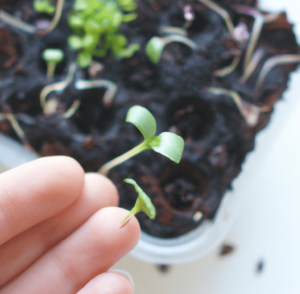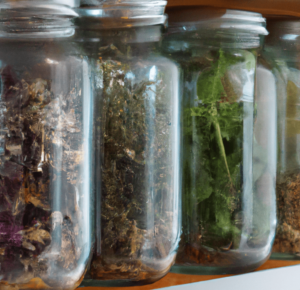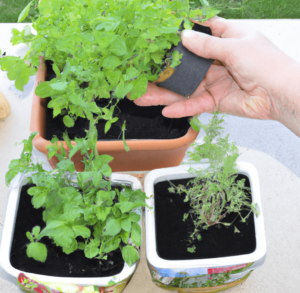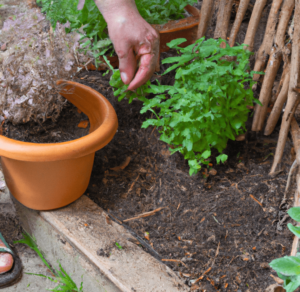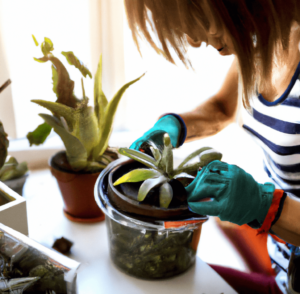In severe locations with unpredictable weather patterns and unforgiving soil conditions, gardening, and plant growth can be difficult. But even in the most challenging conditions, it is possible to grow vegetables and create a thriving garden with the appropriate information and planning. This is our gardening guide on how to grow plants in extreme climates.
Understanding the Climate
Before learning how to grow plants in extreme climates, you need to first understand the climate. This entails being aware of the temperature range, the kind and composition of the soil, and the availability of water. Then, you can make more educated choices about what crops to cultivate, how to properly prepare the soil, and how to efficiently manage water resources.
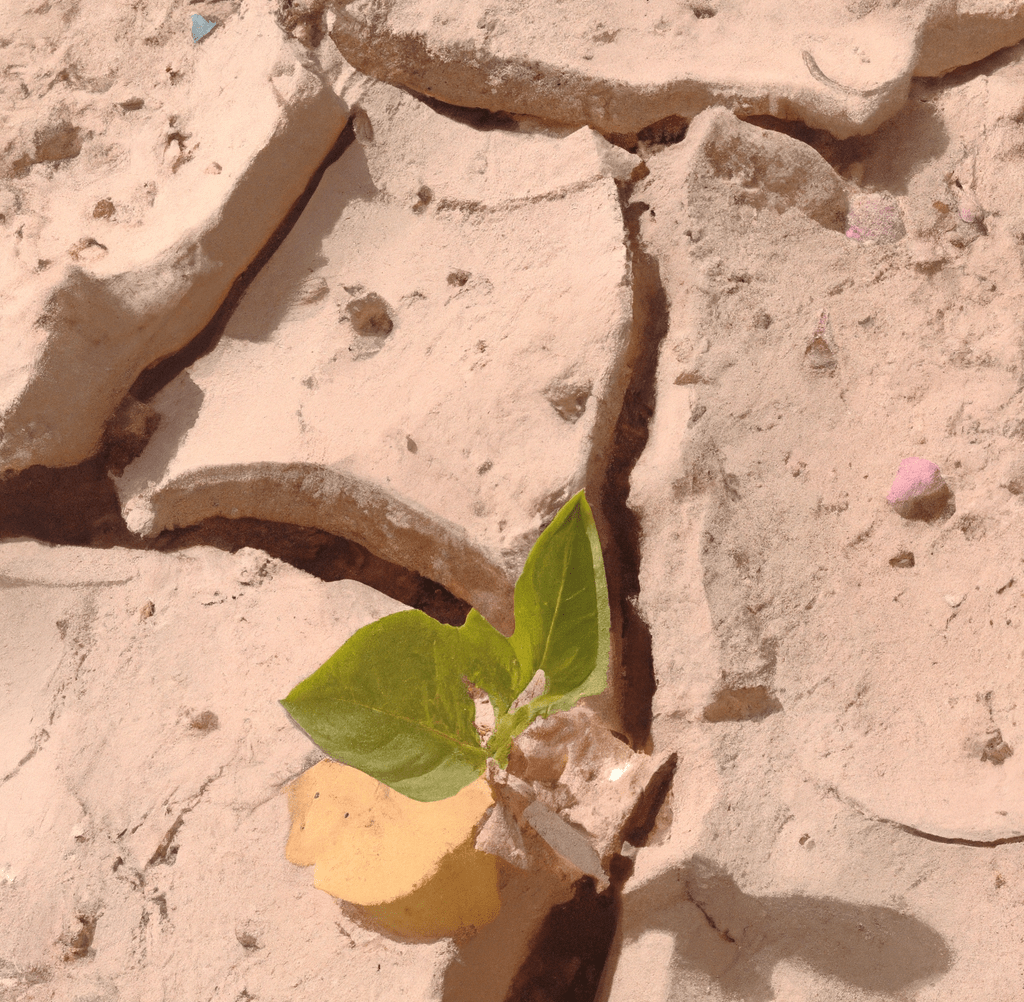
Types of Extreme Climates (e.g. Desert, High Altitude, Arctic)
Deserts, high-altitude habitats, and arctic locations can all have extreme climates. Extreme heat, a lack of available water, and poor soil quality are just a few of the particular difficulties that each type of extreme environment poses for producing plants.
Water management and conservation, for instance, are crucial for the viability of growing crops like watermelon and other vegetables in a desert environment. It’s important to adjust to the thinner air and lower atmospheric pressure in high-altitude regions.
Additionally, it is crucial to safeguard plants in cold climates against ferocious winds and scant sunlight. Despite these difficulties, with the proper planning and methods it is still possible to produce a variety of plants in each of these harsh environments.
Factors That Affect Plant Growth in Extreme Climates (e.g. Temperature, Precipitation, Wind)
As you learn how to grow plants in extreme climates, you’ll also learn that temperature, precipitation, and wind are just a few of the variables that might affect a plant’s ability to grow and thrive in harsh climates:
- Plants under stress from high temperatures can wilt and experience other growth problems.
- Water stress, which is especially important for plants in dry conditions, can be caused by a lack of precipitation.
- Wind damage can hinder a plant’s capacity to photosynthesize and grow.
In addition to these weather-related variables, other important variables that might affect plant growth in harsh climates include soil composition, quality, and water availability.
Choosing the Right Plants
Before learning how to grow plants in extreme climates, how do you choose the right ones? Well, you need to choose plants that are compatible with the local soil composition, water availability, and climatic conditions.
For instance, plants that can withstand dryness are an excellent choice for desert settings, while plants that can withstand cold are ideal for arctic regions. Gardeners can raise their odds of success and lower their risk of failure by choosing plants that are well-adapted to the local climate.
To make sure that each plant has the resources it needs to grow and thrive in the garden, it’s also vital to take into account the particular needs of each plant, such as its needs for water, sunlight, and preferred soil conditions.
Plants That Are Well-Suited for Extreme Climates
You can learn how to grow plants in extreme climates by choosing the following:
- Succulents, cacti, and native wildflowers are a few examples of such plants, and they are well-suited to withstand times of drought and intense heat.
- Other crops, including resilient vegetables and cereals, may be cultivated in a variety of harsh climates and yet provide a plentiful crop despite unfavorable weather.
It’s crucial to take local factors into account when choosing plants for a garden in a harsh environment, including the soil type, water availability, season, and weather patterns, to make sure the plants will have what they need to thrive.
Factors to Consider When Selecting Plants (e.g. Hardiness, Drought Tolerance, Wind Resistance)
There are some important things to take into account to ensure success when choosing plants for a garden in a harsh climate after learning how to grow plants in extreme climates. These consist of wind resistance, drought tolerance, and hardiness:
- The term “hardiness” describes a plant’s capacity to withstand extreme weather and endure hostile surroundings.
- Drought tolerance describes a plant’s capacity to endure and grow in the face of a lack of water.
- The ability of a plant to withstand severe winds without suffering damage is referred to as wind resistance.
Soil and Water
Water and soil are two of the most crucial components in learning how to grow plants in extreme climates. Whether you’re planting sweet potatoes or any other crop, it’s crucial to select soil that is compatible with the region’s unique environmental factors and the plants you intend to produce.
Water availability and proper soil composition are essential for giving plants the nutrients they require to develop and thrive. It’s crucial to conserve moisture in locations with low water availability by utilizing mulch and other methods to stop evaporation. Additionally, it can be essential to supply extra water by way of irrigation or another method, especially during times of drought or extreme heat.
Importance of Soil Preparation in Extreme Climates
To ensure success after learning how to grow plants in extreme climates, your soil must be prepared. This entails preparing the soil for planting by incorporating organic matter, such as compost or manure, to enhance its structure and fertility as well as by modifying its pH levels to provide the perfect growing conditions for the selected plants.
Whether you wish to cultivate spring veggies or plants for any other season, it’s crucial to choose soil that is compatible with the region’s unique environmental factors and the plants you intend to grow.
Techniques for Conserving Water in Extreme Climates
Conserving this priceless resource is crucial in harsh regions where water availability may be restricted in order to maintain plant development and success:
- Mulching, planting on raised beds, and adopting drought-tolerant plants are just a few methods that can be used to conserve water in the garden.
- Planting on raised beds can assist to enhance soil drainage and lower the chance of waterlogging, while mulching helps to keep the soil wet and prevent water evaporation.
- It’s possible to preserve water and make sure that the plants have the resources they require to develop and thrive by using drought-tolerant plants, such as those that are adapted to the local climate.
Irrigation Methods for Extreme Climates
Irrigation is a crucial strategy for ensuring that plants have the resources they need to develop and thrive after you’ve learned how to grow plants in extreme climates. Drip irrigation, sprinkler systems, and manual watering are a few irrigation techniques that work well in harsh climates.
For places with scarce water supplies, drip irrigation is a highly effective way to supply water directly to plant roots. For larger gardens, sprinkler systems are a fantastic option as they offer a practical and effective way to irrigate a variety of plants.
Another choice is hand watering, which is ideal for tiny gardens or places with scarce water supplies. The size, kind, and plants being cultivated in the garden-whether they are spring vegetables or other plants as well as the environment should all be taken into account when selecting an irrigation method.
Protection From the Elements
Garden soil is a sensitive ecosystem that has to be shielded from the elements to survive. Water must always be available to plants, yet excessive rain can wash away essential nutrients from the soil. On the other hand, droughts can cause wilting and even death. When you’re learning how to grow plants in extreme climates as you get more and more into gardening, you can use the following protection methods.
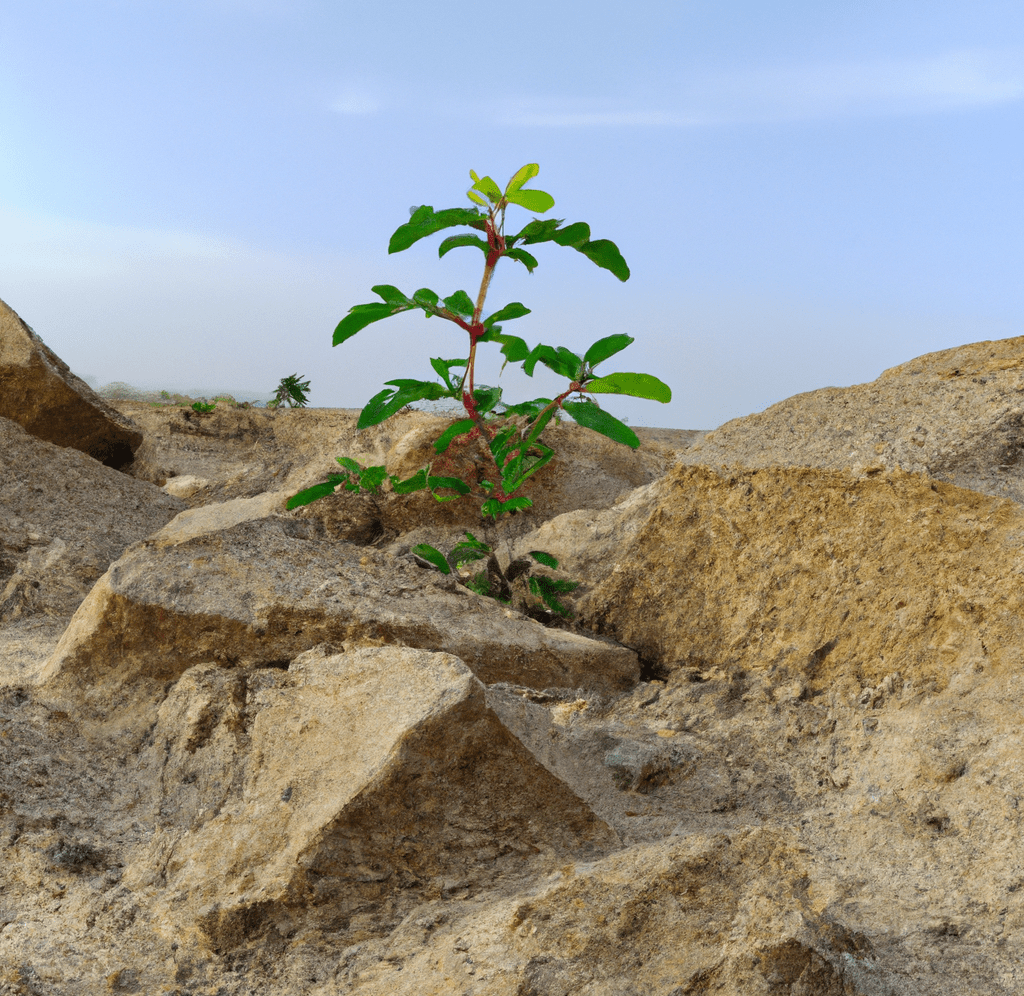
Ways to Protect Plants From Extreme Heat and Cold
Garden crops and plants can suffer greatly from extreme heat and cold, especially during the height of the growing season. You can control soil temperature and guard against harm to plants’ sensitive roots and leaves by:
- Creating shade using shade fabric or by surrounding more fragile plants with taller crops.
- Mulching or adding organic matter to the soil as insulation to control soil temperature and stop moisture loss.
- Regular watering will help the plant tolerate high temperatures, especially during droughts.
- Choosing crops that will thrive in the area’s environment and planting them at the right time of year to protect them from harsh weather.
Techniques for Protecting Plants From Wind and Sandstorms
A garden’s plants and soil are particularly vulnerable to damage from wind and sandstorms. High winds have the potential to uproot plants and take valuable dirt away, while sandstorms have the potential to dry up leaves and harm sensitive vegetation. You can learn how to grow plants in extreme climates and protect them from the wind and sandstorms by:
- Building barriers out of rocks, walls, or fences, or planting windbreaks, to shield vulnerable plants from strong winds.
- Planting plants with deep roots that can better resist heavy winds
- Mulching the soil can help it retain moisture and stop wind and sandstorm-induced soil erosion.
- Using sufficient water should be provided by irrigation systems or human watering.
Using Shade Cloth and Other Protective Materials
Plants, crops, and soil in a garden can be effectively shielded from the weather using shade cloth and other protective materials after you’ve learned how to grow plants in extreme climates. These products are particularly helpful during the height of the growing season when extreme heat, UV rays, and other weather-related factors can harm sensitive leaf and root systems by:
- Regulating soil temperature and minimizing soil moisture loss.
- Supplying shade during hot weather to prevent plant overheating and sunburn.
- Defending delicate vegetation against wind, sandstorms, and other bad weather.
- Extending the growing season by providing plants with a more stable and controlled environment.
Shade cloth and other protective fabrics can be used by gardeners in a variety of ways, such as to build shade structures, cover raised beds, or employ frost blankets in the winter.
Maintenance and Care
After learning how to grow plants in extreme climates, you’ll need to maintain and care for them:
- Seasonal considerations: When caring for your plants, it’s critical to consider the season and climate. For instance, spring is an excellent season to fertilize and prune because plants are in a growing period.
- Maintenance of plants: You keep plants healthy in harsh conditions, make sure to water them frequently, and give adequate drainage. Additionally, give enough sunlight and, in hot areas, enough shade.
- Controlling pests and diseases Pests and diseases can spread swiftly in arid areas. It’s crucial to routinely monitor your plants for pests and take precautions to avoid infestations in order to combat them. Think about utilizing organic techniques, including companion planting, or putting an integrated pest management (IPM) program in place.
- Choosing the right vegetables: It’s crucial to select climate-adapted types while growing vegetables in harsh environments. Additionally, be sure to supply enough nutrients, sunlight, and water.
- Harvesting: To get the most out of your garden, you must be aware of when to harvest your plants. Keep an eye on your plants and watch for changes in size or color that indicate they are ready for harvest.
Bottom Line: How to Grow Plants in Extreme Climates
Learning how to grow plants in extreme climates can be gratifying and fulfilling. Seasonal factors, plant upkeep, insect and disease control, producing vegetables, and harvesting are a few things you need to keep in mind but we’ve outlined everything above just for you!
FAQs on How to Grow Plants in Extreme Climates
What difficulties do plants face when they are grown in harsh environments?
In difficult climates, factors such as temperature, precipitation, wind, soil composition and quality, and water availability can all have an impact on plant development.
What should I think about before learning how to grow plants in extreme climates?
Before learning how to grow plants in extreme climates, it’s critical to have a thorough awareness of the local climate, weather patterns, temperature range, kind of soil, soil composition, and water availability. You may then decide what crops to cultivate, how to prepare the land, and how to manage water resources with knowledge.
What different forms of extreme climates are there?
A few examples of extreme climates are arctic regions, deserts, and environments at great altitudes. Extreme heat, a shortage of water, and poor soil quality are just a few of the particular challenges that each of these regions presents.
How can I select the ideal plants for harsh climates?
It’s crucial to choose plants that are suitable for the local soil composition, water availability, and climatic circumstances when choosing plants for tough settings. When making your decision, take into account elements like hardiness, drought tolerance, and wind resistance.
What kinds of plants do you think might thrive in harsh climates?
Succulent, cactus and native wildflowers are examples of plants that do well in difficult climates and can resist situations like drought and excessive heat. Additionally, resilient grains and vegetables can be cultivated in a range of difficult environments.
What role do soil and water play in the hostile environments where plants are grown?
Water and soil are two of the most essential elements for growing plants in challenging environments. It is crucial to choose soil that is appropriate to the local environmental conditions, the plants you are cultivating, and the water resources you have available.
What irrigation techniques are available for growing plants in harsh environments?
In severe environments where water availability may be constrained, irrigation is a key factor in ensuring that plants receive the resources they need to develop and survive. In tough conditions, drip irrigation, sprinkler systems, and manual watering are some methods that are effective. Depending on the type and size of the garden, the plants being grown, and the surrounding area, choose an irrigation technique. For instance, if you’re learning how to start a garden in a small space, you may not need a complicated sprinkler system.
How can plants in a garden be shielded from extreme heat and cold?
Extreme heat and cold may be quite harmful to garden crops and plants, especially during the growing season. Creating shade, mulching or adding organic matter to the soil as insulation, routine watering, picking crops that are adapted to the environment, and planting them at the appropriate time are all methods for protecting plants.
What are some methods for shielding plants in a garden from wind and sandstorms?
Plants and soil in a garden are especially susceptible to wind and sandstorm damage. To assist plants to withstand the drying effects of sandstorms, gardeners can erect barriers, plant windbreaks, mulch the soil, and supply enough water.
What are the benefits of employing protective materials like a shade cloth in gardens?
Plants, crops, and soil can be effectively protected from weather-related variables using shade cloth and other protective materials. Utilizing these materials has benefits such as controlling soil temperature, offering shade, protecting delicate flora, and lengthening the growing season.
What are some seasonal factors to take into account when taking care of plants in a garden?
The season and climate should be taken into account when caring for plants. For instance, when plants are actively growing in the spring, this is the best time to fertilize and prune.
What upkeep is required for plants in tough environments?
Make sure to water plants frequently, and provide appropriate drainage, enough sunlight, and enough shade in hot places to keep them healthy in severe conditions. Take care to avoid infestations and keep an eye out for pests and illnesses on plants. Think about implementing an integrated pest management strategy or organic methods.
What should be taken into account when producing veggies in tough environments?
To ensure adequate maintenance and care while growing vegetables in difficult climates, it’s important to choose varieties that are adapted to the environment. For instance, learning how to grow organic plants and vegetables may be slightly harder in a harsh environment if they are not genetically modified to withstand certain conditions.


